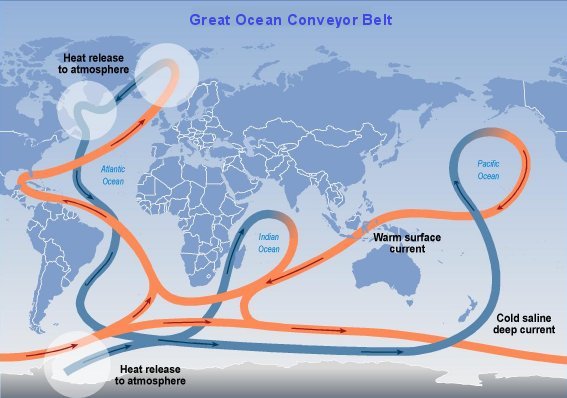Thermohaline circulation
Related Topics |
Thermohaline circulation |
The Thermohaline Circulation (also called Great Ocean Conveyor Belt) is a large-scale density-driven circulation in the ocean, caused by differences in temperature (thermo) and salinity (haline), but despite what its name suggests, it is also driven by mechanical forces such as winds and tides. A more accurate scientific term would be the Meridional Overturning Circulation (MOC). In the North Atlantic the thermohaline circulation or MOC consists of warm surface water flowing northward and cold deep water flowing southward, resulting in a net poleward transport of heat, thereby moderating the tropics and warming the high latitudes of Europe. The surface water sinks in highly restricted sinking regions located in high latitudes. According to IPCC (Climate Change 2007: Working Group I: Physical Science basis), it is very likely that the Atlantic Ocean MOC will slow down during the 21st century. However it is very unlikely that the MOC will undergo a large abrupt transition during the 21st century. At this stage, it is too early to assess the likelihood of an abrupt change of the MOC beyond the end of the 21st century but the possibility cannot be excluded.
|
